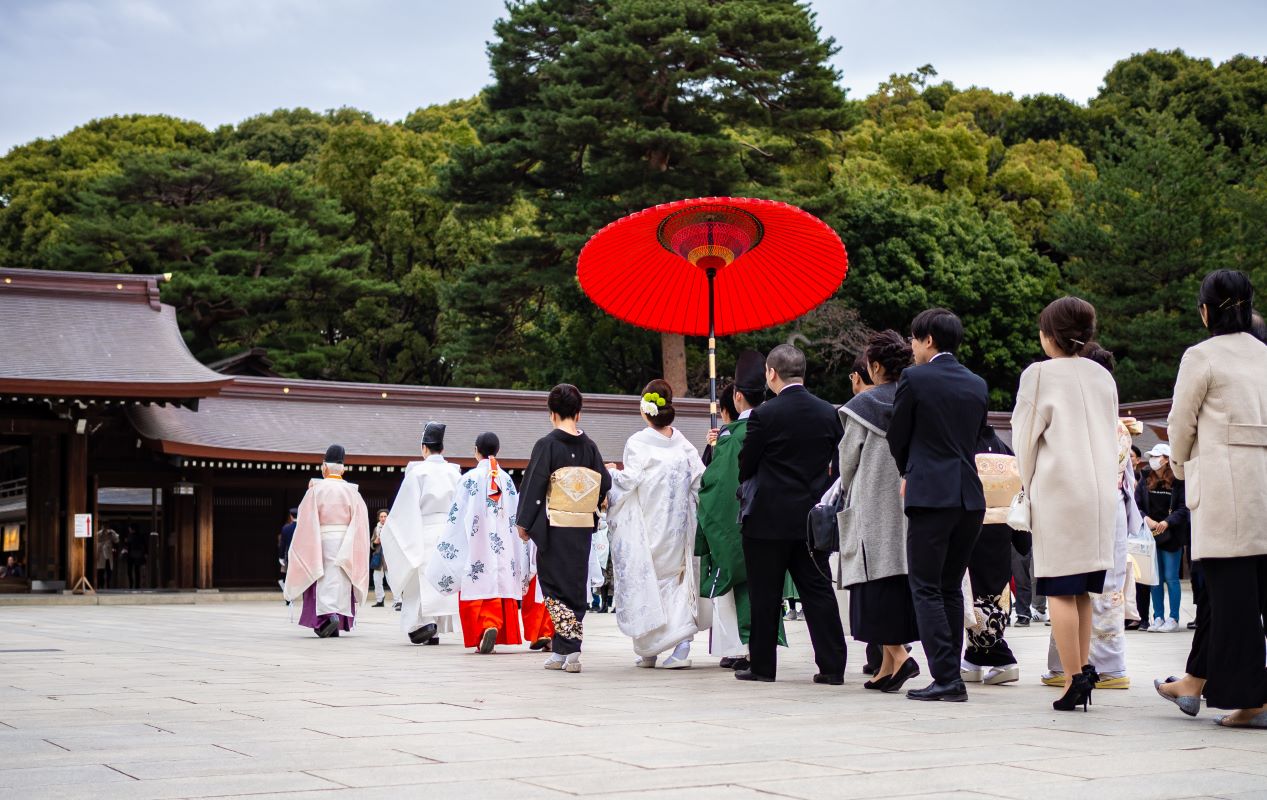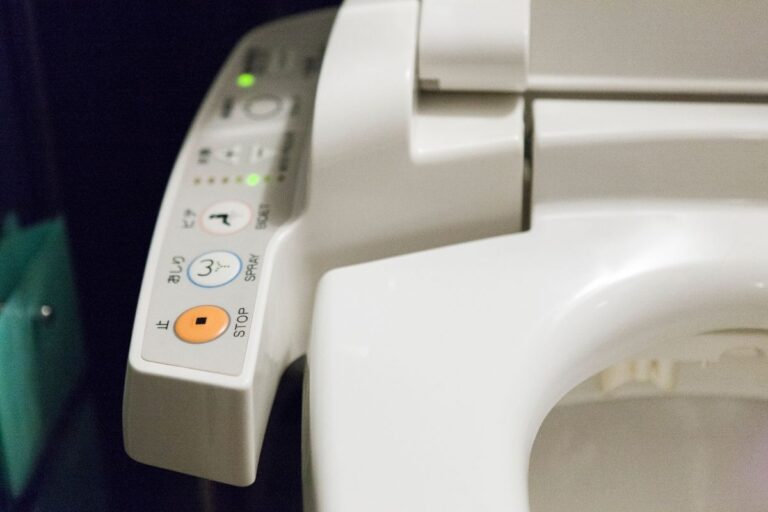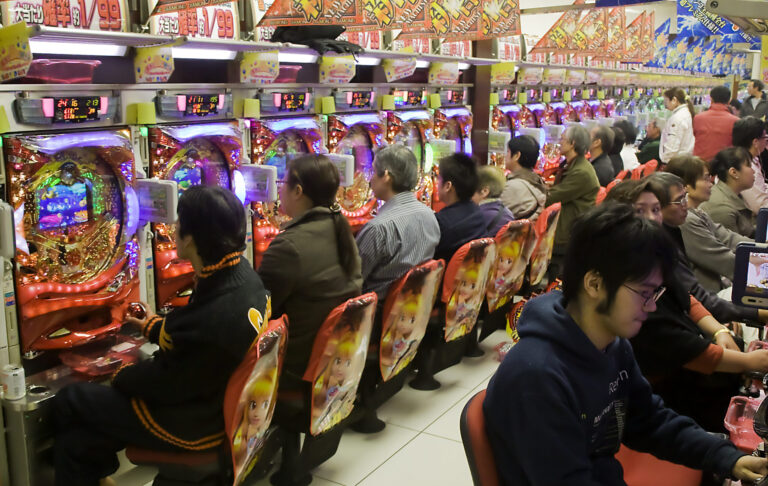Dressed entirely in white, the bride gazes at her groom and tells him how she vows to build a life together with him based on mutual respect and understanding. The groom, dressed in black, repeats her vow, promising like she does to stay faithful and obedient. And then they exchange… the sake. (And then the rings, if they feel like adding a little Western flavor to their wedding!)
Many modern Japanese couples choose to mix Christian, Buddhist, and Shinto customs at their weddings. Although the most traditional kind of Japanese wedding takes place at a Shinto shrine, it’s very common for modern Japanese couples to be married by a Shinto, Buddhist, or Christian priest in a “wedding hall,” a business that exclusively rents out building space for weddings.
The bride and groom may wear three different wedding outfits each—the traditional Japanese kimonos, the Western-style bridal gown and tuxedo, and casual Western party attire—throughout the celebration!
However, the majority of Japanese follow the traditional Shinto ceremony custom for at least the exchange of vows. Japanese weddings most often take place in the spring and the fall, which are seen as auspicious seasons to begin a union.
Omiai
Although the majority of modern Japanese couples meet through friends, school, work, or the dating scene, much like couples do in the West, the omiai, a “matchmaking ceremony,” is still quite common, particularly for the people society considers too “old” to still be single—which includes people as young as their mid- to late-20s!
A matchmaker who has connections in a local community gives eligible men and women portfolios containing pictures of local singles along with “resumes” highlighting their accomplishments. If a potential couple responds positively to each other’s portfolios, the matchmaker arranges a formal meeting between the two parties—and their parents! If the couple likes one another, they can choose to continue dating on their own and may agree to marry after as few as three dates.
The Traditional Shinto Ceremony
During a kekkon-shiki, a traditional Japanese wedding ceremony, the bride dresses in a shiromuku, a traditional white kimono used only for weddings that includes an elaborate rectangular headdress. The groom dresses in the all-black montsuki haori hakuma; a hakuma is a type of oversized pants worn over a kimono.
The only guests in attendance are the closest members of the bride’s and groom’s families. There are no bridesmaids or groomsmen, but a special place of honor is set aside for the nakoudo, an older married Japanese couple with close ties to at least one of the families, who serve as the “matchmakers” of the ceremony.
If they didn’t literally set up the match—and they may have—they are considered go-betweens who ceremonially negotiate the joining of the two families.
The bride, the groom, and all those in attendance are ritually purified by the Shinto priest presiding over the union before the ceremony begins. The priest performs a marriage ritual and prayer, asking the kami (gods or spirits) to bless the couple in all their years together and to allow an auspicious ceremony.
The bride and groom then take turns reading their respective oaths of commitment to one another or the nakoudo may read the oaths aloud on behalf of the couple.
Next comes the san-san-kudo (“three times three”) ritual, in which miko (Shinto priestesses) serve the couple sake in nuptial cups. The bride and groom sip from these cups and exchange cups three times, stopping to sip more sake after each exchange. The number three, being indivisible, is considered a lucky number in the Shinto religion.
The families of the bride and groom are then offered sake, which they sip and exchange with one another just as the bride and groom did.
The couple then moves to a sanctuary, where they offer twigs of the Sakaki tree to the kami who blessed their union. Then it’s time for the reception!
The Reception
The reception, called the kekkon-hiroen, takes place at an adjoining hall, where friends, co-workers, and other distant relatives might join the wedding party for the celebration. The couple may change out of their traditional Japanese attire to Western-style wedding outfits or casual party attire—or both!
A full course meal is served along with a wedding cake (a Western import) and the newly married couple sits on a stage and they listen to their guests give speeches and performances in honor of them. Karaoke is a popular pastime at these events!
Rather than giving wedding gifts, all guests in attendance are expected to give the couple a gift of money (which is often around ¥30,000, or ~US$312) in a ceremonial envelope called the shugi-bukuro. However, the guests can look forward to receiving hikidemono as they leave. These are “souvenir bags” from the couple to their guests that include gift cards, houseware items, and sweets.



